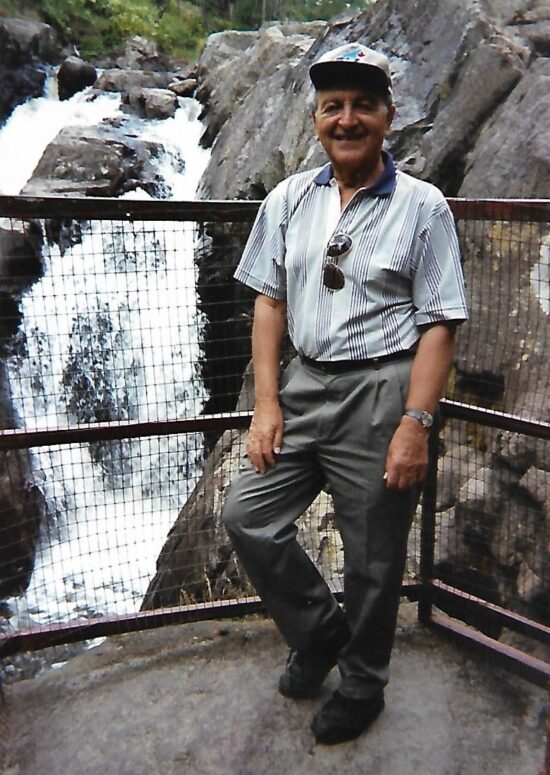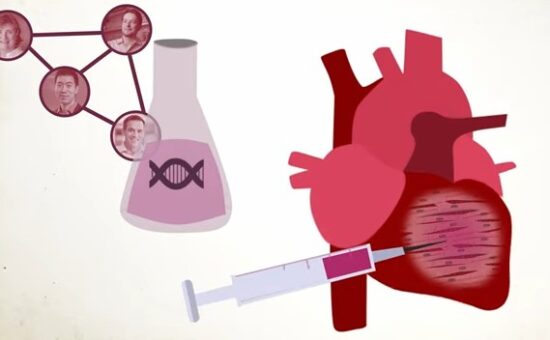
In his mid-80s, my father-in-law (seen in the above picture at an earlier time in his life) suddenly found walks from his midtown home to his jewellery store in the heart of downtown Toronto, were suddenly getting much harder. He described what he was experiencing as walking wearing concrete shoes. He would become breathless at times. This was a man who cycled 20 kilometres almost every weekend. Referred to a cardiologist, he learned he had a genetic disorder, hypertrophic cardiomyopathy, and that its appearance in his 80s was indeed rare.
Hypertrophic cardiomyopathy is one of those heart ailments with a genetic link. It causes the heart muscle to thicken losing its flexibility as a pumping chamber. As the heart wall, particularly the septum which separates the left and right ventricles, thickens it begins to impede blood flow through the aortic valve to the rest of the body.
Although hypertrophic cardiomyopathy can happen at any age, it is rare to begin expressing symptoms in someone as late as it did with my father-in-law. Most of those who get it have a family history of the disease. The odds of inheriting the genes are 50/50. That’s why my wife is followed by a cardiologist regularly.
At the time my father-in-law was given his diagnosis he was offered two options. One involved an operation to ablate, that is burn away a part of the thickening walls, to restore flexibility. The second was a pacemaker. He chose the latter.
Cardiomyopathies occur in about 1 in every 250 people. In the U.S. approximately 1.5 million are affected. Many are unaware. It appears in all life stages. In addition to hypertrophic there are other cardiomyopathies. These include:
- restrictive cardiomyopathy with the heart muscle becoming more rigid and usually associated with another heart disease present
- arrhythmogenic right ventricular dysplasia, a version of cardiomyopathy that damages the right side of the heart.
People with cardiomyopathy more often find their lives shortened although not in the case of my wife’s family. My father-in-law died at age 97. His father had it but lived to age 92. And his sister also was diagnosed with it and died at age 102. It looks like they had other genes that were working in their favour.
Cardiomyopathies are life-threatening. They cause arrhythmias and can lead to a stroke, heart failure or even a heart attack. When young people get diagnosed with hypertrophic cardiomyopathy the option today is a heart transplant or a very shortened lifespan. With arrhythmogenic right ventricular dysplasia in young people, defibrillators can be implanted to stop the arrhythmia and a heart transplant is the only other option.
A Cure on the Way for Genetic Heart Conditions
CureHeart was formed by a group of researchers from a global community that includes the University of Oxford, Harvard, the Broad Institute, Duke, Share, Wave Life Sciences, Myokardia, and Cardiomyopathy UK, a heart muscle charity. Their work on gene therapy for cardiomyopathy recently won them the British Heart Foundation’s Big Beat Challenge, a contest that involved 75 entries from around the world competing for a £30 million grand prize.
The CureHeart team uses a technique called base and prime editing to suppress and eliminate faulty genes linked to inherited heart muscle diseases. They have identified specific genes that work alone or in combination with others responsible for genetically inherited heart conditions like cardiomyopathies. Mice studies are showing that in some cases a faulty gene can be repaired or switched off. But cardiomyopathies can involve a cascade of gene interactions following a specific sequence which means treating them in isolation isn’t sufficient. So CureHeart is developing a way to switch off faulty genes, edit and correct them, and do it in correct sequence.
The plan is to deliver a cure through a vaccine which can be administered like any other, a shot in the arm, or can be introduced through the chest wall directly into the heart muscle itself. The end product would be offered to family members with a history of genetically-associated cardiovascular disease.
As a parent of a child born with congenital heart disease, the CureHeart project represents an exciting development for coming generations. The team notes that what can work for cardiomyopathy could prove to be useful for curing other inheritable cardiovascular diseases. And it doesn’t have to stop at the heart considering the numerous other gene-associated diseases that humanity faces. If successful, vaccine-delivered cures like these could become standard treatment in reversing bad genes. This medical advance will be a remarkable achievement.










[…] editing are being used by the team at CureHeart to tackle cardiomyopathies. You can read what I recently wrote about their work on this blog site. Like base editing, prime only breaks a single DNA strand, but in addition makes edits to […]